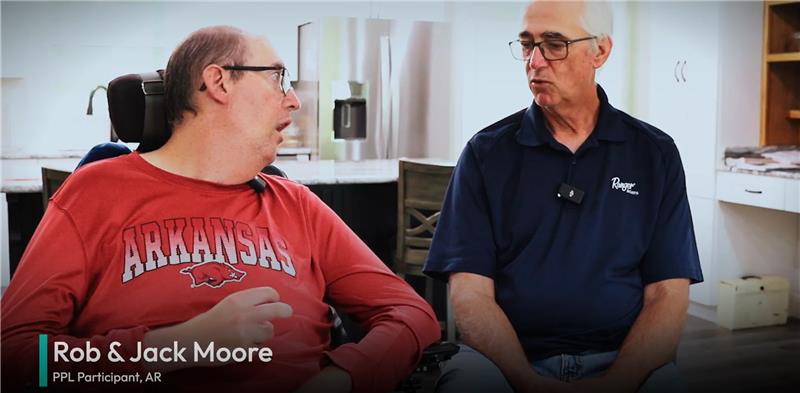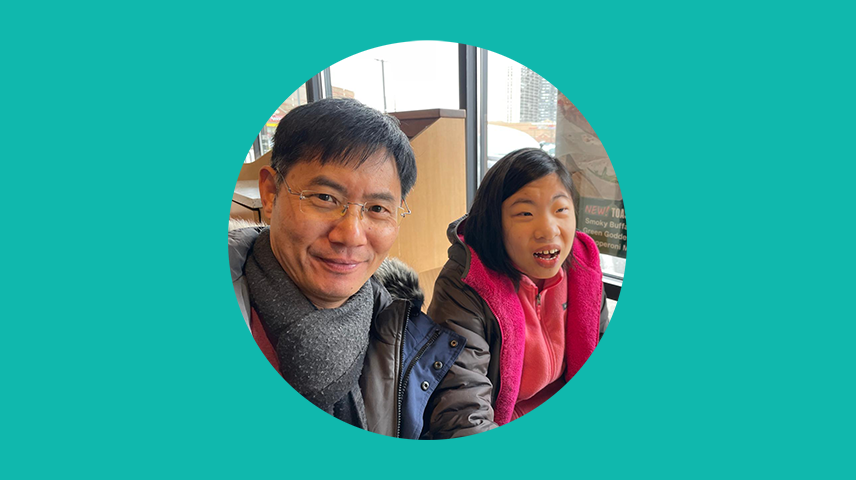Addressing Health Inequity in Autism: Challenges and Solutions
By PPL on August 5, 2024

I’ve previously talked about health inequity faced by Black people, Asian Americans and Pacific Islanders, and those in the LGBTQ+ community.
Today I’m looking at issues faced by those with autism spectrum disorder (ASD).
What is Autism Spectrum Disorder?
According to the World Health Organization, ASD constitutes a complex group of conditions related to development of the brain. It may affect how people interact with others, communicate, learn, and behave.
Autistic people, or those “on the spectrum,” can present a range of symptoms, including challenges with social skills, verbal and nonverbal communication, and repetitive behaviors. Common co-occurring conditions include epilepsy, gastrointestinal and immune function disorders, depression, anxiety, and sleep disorders.
The supports needed by autistic people vary greatly and can evolve over time. Some live independently, others require life-long care. The levels of support provided by healthcare systems and the community can have a great impact on their quality of life and productivity.
As I said, ASD is complex, and one size doesn’t fit all.
Autism is on the rise. While some say this reflects improvements in diagnostics, there is no denying the magnitude of the numbers. In 2023, a Centers for Disease Control study found that 2.8% of eight years olds in the U.S. have ASD; with a current U.S. population of over 336 million, we’re talking about 9.4 million Americans—more when you consider diagnoses made after the age of eight.
Those millions of people face challenging issues that impact their medical diagnoses, treatment, and ultimately, their length and quality of life.
One study found many more barriers are experienced by those with autism compared to both neurotypical patients, and those with a different disability. Let’s explore some of the causal factors and recommendations for addressing these barriers.
Communication
The communication difficulties that many autistic people face exist on a broad spectrum and can affect both verbal and nonverbal communication. In a healthcare setting, these difficulties can result in misdiagnosis or inappropriate treatment.
Verbal Communication: Some autistic people may be completely unable to communicate using speech. Others may be articulate about a range of topics that hold their interest, though they may not be able to adequately describe their medical symptoms and concerns.
Idioms, sarcasm, metaphors, or abstract concepts may not be understood. It can be a challenge for some to start and continue a conversation, or to understand when it’s their turn to speak.
Autistic people can have a condition called echolalia, which causes continuous repetition of words or phrases heard earlier. Some may respond to a question by repeating the question. Others might speak in a high-pitched, robotic, or sing-song voice. It can be hard for an untrained healthcare provider to communicate with a patient presenting this way.
It can also be difficult for those on the spectrum to identify and communicate internal states or feelings, important things to share during a visit to a doctor.
Nonverbal Communication: Many with ASD have difficulty interpreting and using nonverbal cues, like facial expressions, gestures, or body language. Maintaining eye contact is often difficult and can also lead to miscommunication.
Interpretation and use of nonverbal cues can be explicitly taught to aide autistic patients during their medical encounters. Importantly, medical professionals should be educated on methods of communications that will be effective, such as using straight-forward language and allowing for extended time for patients to respond. The use of alternate communication systems such as the Picture Exchange Communication System (PECS), related apps such as TouchChat, or voice output communication aids (VOCA) and speech-generating devices (SGDs) can also facilitate communication, but require training for the user, provider, or both.
Social Interaction
Understanding and navigating social interactions can be challenging for those with ASD. Social cues may be misinterpreted, and societal norms misunderstood, making it difficult to build and maintain relationships. The resulting feelings of isolation are common and can be profound. This is a powerful negative social determinant of health.
A recently published study found that loneliness (31.9%) and a lack of emotional support (24.8%) are the most commonly reported social determinants, and can increase the risk of heart disease, diabetes, suicide, dementia, and early death.
Structured activities and peer mentoring programs can provide opportunities to practice these skills and form new relationships. Government and community support of autism social groups, group homes, and engagement activities could mitigate the risks.
Autistic people also have a high unemployment rate, which adds to their social isolation. Corporate programs offering workplace accommodations and proper support for people with ASD can help prevent negative health conditions related to lack of social interaction. Examples of these programs offered by global companies include Microsoft’s Neurodiversity Hiring Program and SAP’s Autism at Work Program, as well as locally focused organizations such as Exceptional Minds Film Studio in Los Angeles and the Rising Tide Car Wash chain in Florida.
Sensory Issues
Autism commonly affects perception of—and reaction to—external stimuli. Sensory inputs may be experienced more strongly (hypersensitivity) or, paradoxically, less strongly (hyposensitivity). Most people have a combination of both.
Sensitivities can impact all five senses, balance, awareness of body position or movement, and internal body cues, like hunger or illness.
Hypersensitivity: Autism can cause lights to seem blinding, noises deafening, tastes or smells to be overwhelming. Fabric textures may be intolerable. Overstimulation is often triggered in environments with a lot going on, like a medical office or a clinic. It can cause immense discomfort, anxiety, or lead to a meltdown. One autistic person put it this way:
How I wish I recognized sensory overload: ‘Wow all this sensory input is really affecting me!’”
How I actually recognize sensory overload: ‘I’m angry and don’t know why! Oh wait. I’m tired and don’t know why! Oh wait. I’m weepy and don’t know why! Oh wait.’”
Hyposensitivity: Conversely, some on the spectrum experience diminished feelings in response to stimuli, causing them to seek out loud noises, bright lights, or other exaggerated inputs. Those with hyposensitivity may enjoy rocking in place, being tightly hugged, or riding a roller coaster. This seeking out of intense external stimuli is known as “stimming,” and the behavior can vary greatly, but often involves repetitive motions such as arm flapping, or touching a particular object over and over.
While it may seem distressing, stimming is often, in fact, enjoyable, and can reduce stress for many.
Sensory relief can be found by modifying the healthcare environment (dimmer lights, quieter sounds), or by tools such as sunglasses, shade-producing headwear, or noise-canceling headphones. Forward thinking medical centers, such as UHealth Jackson in Miami, are offering “Autism Friendly” facilities with sensory areas equipped with comfy bean bags, dimmed lighting, soft music, and stress-relieving sensory kits.
Executive Function and Organizational Skills
Many autistic people have difficulty with time management, a skill also lacking in those with ADHD, frequently comorbid with ASD. It can be hard for them to break down a project into manageable steps or keep track of milestones and responsibilities. Working memory can be impaired, making it hard to remember to perform daily tasks like taking medicine.
These difficulties with planning and organizing can cause missed appointments, poor treatment adherence, and challenges navigating large, complex healthcare systems.
Organizational skills coaching, combined with tools like visual schedules, checklists, and project management apps can help improve planning and execution, while time management skills can be improved by practicing time estimation, setting reminders, and using timers. Healthcare organizations can also offer digital apps that remind patients of medication needs and appointments with individualized gamification that will encourage utilization.
Routines and Change Resistance
Predictable routines can help people with ASD feel comfortable, secure, and calm. Routines can be disrupted due to visits to a medical facility, when therapy sessions are needed, or when a new medication is introduced.
Introducing change slowly, providing plenty of advance warning, using text and pictures in a story-like format to explain upcoming changes, and incorporating the patient’s passions and interests can all help to smooth transitions. Visual schedules are a useful reminder of upcoming changes. Telemedicine can minimize disruption (and provide access to care for those in rural settings).
A cherished moment with my children, Luca and Jade, exploring Wyoming in 2014.
Looking Ahead
With the growing awareness of ASD and neurodiversity, things are improving, but there’s still a lot of work to be done. It’s important for healthcare and community leaders to recognize that having different support needs does not make people difficult or “less than”. As with racial and ethnic healthcare disparities, disparities for those with ASD stem from our healthcare system’s narrow framework that forces all individuals adapt to a singular approach, instead of offering a system that accommodates differences in communications, sensitivities, and comorbidities.
We can have a healthier population and a healthcare system that yields better outcomes. It requires flexibility, education, and a commitment to supporting what makes us great—our individuality.
Continued progress will require policies that mandate proper funding and assistance for people with ASD; more and better community support for education and social programs; corporate initiatives that advance employment opportunities; and healthcare organizations that accommodate this diverse group of very individual individuals.



